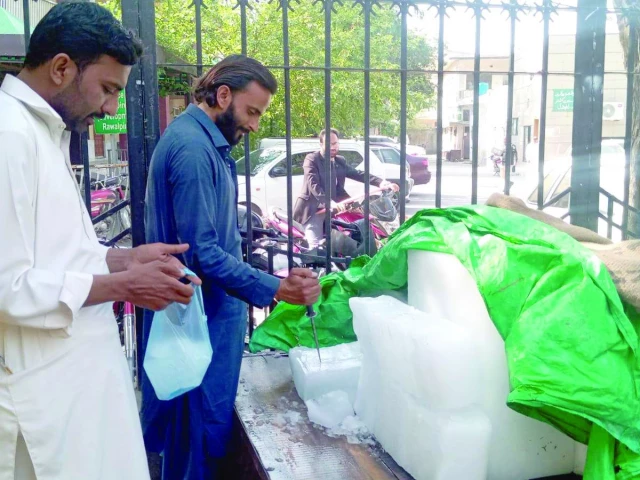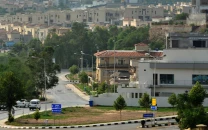Ice trade faces a slow freeze
Home refrigeration, rising electricity costs, and changing lifestyles have cooled demand

With the arrival of summer, the sale of ice has surged and eventually the price has also seen a sharp increase, now being sold at Rs40 per kilogram in the open market in Rawalpindi and outskirts.
Despite this seasonal demand, advancements in science and the widespread availability of refrigerators and coolers in homes have significantly reduced the overall need for ice, as well as its production and sale. The number of ice factories has also dwindled over the years.
From 1950 to 1990, there were a total of 54 small and large ice factories operating in the twin cities of Rawalpindi and Islamabad. Some of the largest were located at Marrir Chowk, Murree Road, Lal Kurti, Pirwadhai, Rawat, and Adiala Road.
These factories used to operate 24 hours a day during summer and 10 to 14 hours even in winter. However, due to urban expansion, increasing numbers of families sending members abroad, and the growing presence of home refrigerators, the demand for commercially produced ice began to decline.
Between 2000 and 2005, 37 ice factories were shut down, with their machinery sold off as the business became unprofitable. From 2010 to 2015, another nine factories closed. Currently, only eight small and medium-sized ice factories remain operational in Rawalpindi. These factories have resumed 24-hour production as the summer season begins.
Before the 2000s, long queues, disputes, and crowding at ice stalls were a common sight in summer. During Ramazan, especially after 3pm, people would line up at stalls with sacks and towels to collect ice.
As soon as a fresh supply would arrive from the factory, buyers would scramble to get their share. At that time, ice was sold for just Rs 12 per kilogram, increasing to Rs10/kg during the peak of the 1990s.
Back then, each marketplace had multiple ice vendors who enjoyed brisk business. Residents would wrap the ice in sacks to prevent it from melting.
Hotels also relied heavily on this ice. Today, its use in hotels, motels, and guesthouses has greatly diminished, as cold beverages and modern refrigeration have taken over. It's estimated that cold drinks have replaced about 60% of the market demand for ice. At home, refrigerators and deep freezers meet most needs, while those without one often rely on neighbors.
Currently, ice is primarily used in shops, plazas, and offices for employees and customers. Shopkeepers place it in coolers, and legal professionals at district courts also use it during hot days. In flower markets, ice chunks are used to preserve fresh petals.
Even milk vendors have shifted to using expensive chillers. Previously, ice blocks were commonly used in hospital morgues, but these have now been replaced with air conditioning and chillers.





















COMMENTS
Comments are moderated and generally will be posted if they are on-topic and not abusive.
For more information, please see our Comments FAQ